They’re doing Double Dutch again up in the South Bronx. Way up.
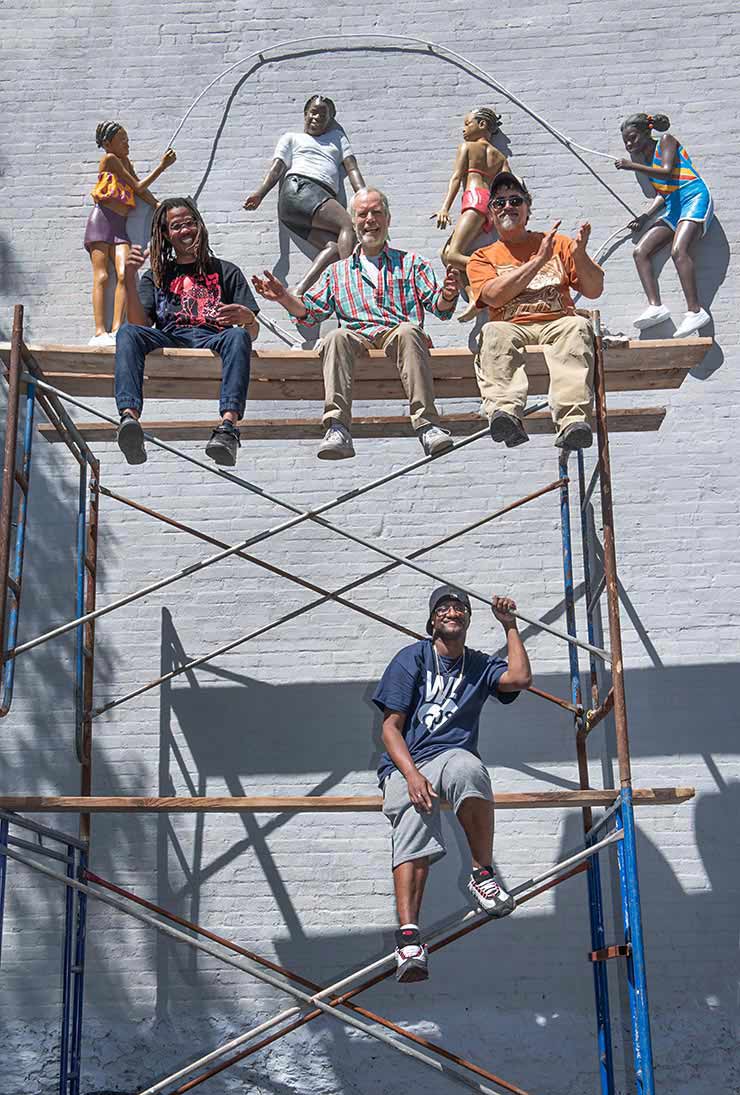
John Ahearn & Rigoberto Torres. “Banana Kelly Double Dutch” The Bronx, NYC. 2018. (photo © Martha Cooper)
Restored to look like new, this is the third time that La Freeda, Jevette, Towana and Staice have taken their rope jumping game to this wall on Kelly Street and the spirit of their game and the culture are here as well. Based on the actual girls as models casted, the sculptors John Ahearn and Rigoberto Torres recently restored them and placed them on the same wall that they first appeared on in 1982, a moment from New York’s history.
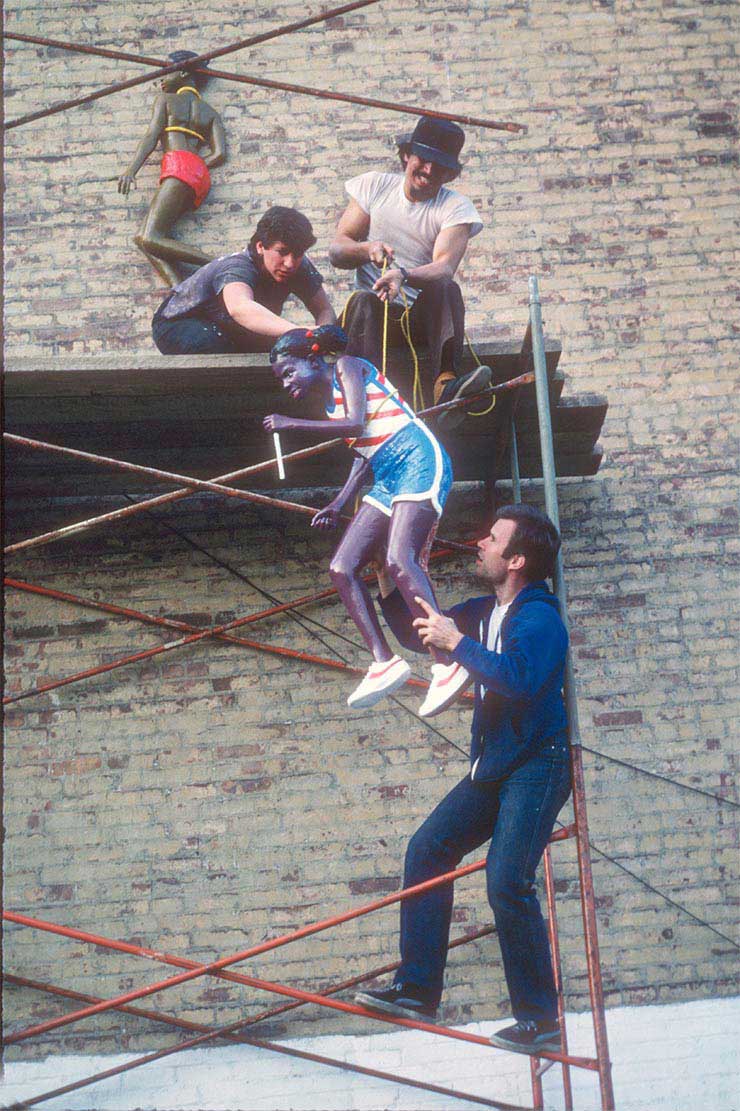
John Ahearn & Rigoberto Torres. The original installation of “Banana Kelly Double Dutch” The Bronx, NYC. 1982. (photo © Martha Cooper)
Their art practice in the public space has a fully engaged, activist quality – insisting as it does to herald the everyday heroes in a culture that tends to reserve public space to elevate figures from the military, the church, politics, literature and Pop Culture. Even the name of this piece refers to the community group that hosted the sculpture for many years, Banana Kelly.
With a somewhat radical art practice that claims public sphere for the public for forty years, the duo have made casts of people in the neighborhood for decades, in the process forming long relationships with the sitters and their families, and their extended families.
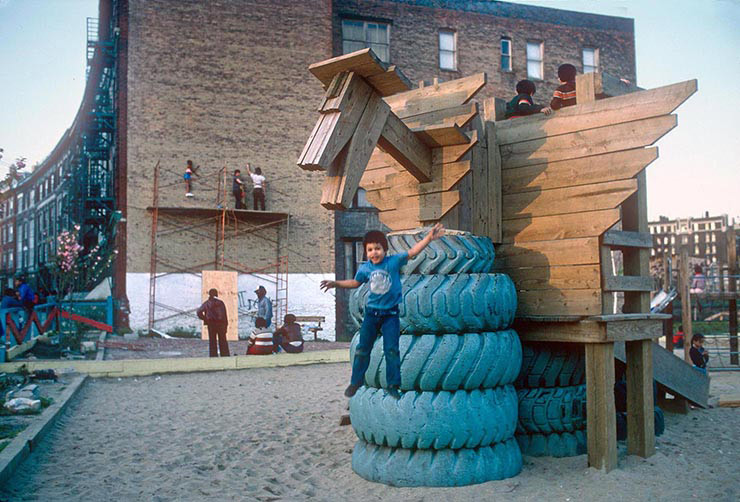
John Ahearn & Rigoberto Torres. “Banana Kelly Double Dutch” The Bronx, NYC. 1982. (photo © Martha Cooper)
A curiosity for many on the street at first, a lot of folks first became familiar with the work as it was being performed – whether in workshops like the one Torres first saw Ahearn conducting in the storefront windows of the famous art space Fashion Moda or later at numerous block parties around the neighborhood.
Owing to his family connection to a sculpture factory, Torres had knowledge that Ahearn was missing and their yin/yang temperaments created a professional partnership balance that eventually has landed their work in places as far as Brazil, Taiwan, and Orlando, where Torres moved a number of years ago with his family.

John Ahearn & Rigoberto Torres. “Banana Kelly Double Dutch” The Bronx, NYC. 1982. (photo © Martha Cooper)
In the intervening years the Ahearn/Torres partnership has garnered attention in significant gallery and museum shows as a sociological hybrid, a captured record of life and culture that favors the unfamous, occasionally the famous. Humble as they are about their accomplishments and refreshingly reticent to be boastful, their combined projects have been collected by heavy hitters in the Street Art, hip-hop and contemporary art world.
Their sculptural portraits of the street have also been featured in exhibitions in the New Museum of Contemporary Art, the Institute of Contemporary Art, London, the Whitney Museum of American Art, New York, the Museum of Fine Arts, Boston, the Museum of Contemporary Art, Los Angeles, the Irish Museum of Modern Art, the Bronx Museum of the Arts , “Greater New York” at MoMA PS1, New York. In an interview with BSA Ahearn gives credit to his creative partner for some recent shows including “his two homages to his Uncle Raul’s Factory in the “Body” Show at the Met Breuer, and his magnificent funky “Ruth Fernandez” figure in Jeffrey Deitch’s “People” Show.

John Ahearn & Rigoberto Torres. “Banana Kelly Double Dutch” The Bronx, NYC. 1982. (photo © Martha Cooper)
What’s remarkable about this piece is not only that it has survived the constant changing of the New York City skyline but also the fact that photographer Martha Cooper was on hand to capture the bookends of the Double Dutch installation – the first one in 1982 and this new one in 2018. An anthropologist and ethnographer by heart and training, Ms. Cooper also captured many of the surrounding people and activities in the neighborhood during both of the installations and she generously shares them here with BSA readers to give a further appreciation of the time passed and the cultural relevance of the duo’s work.
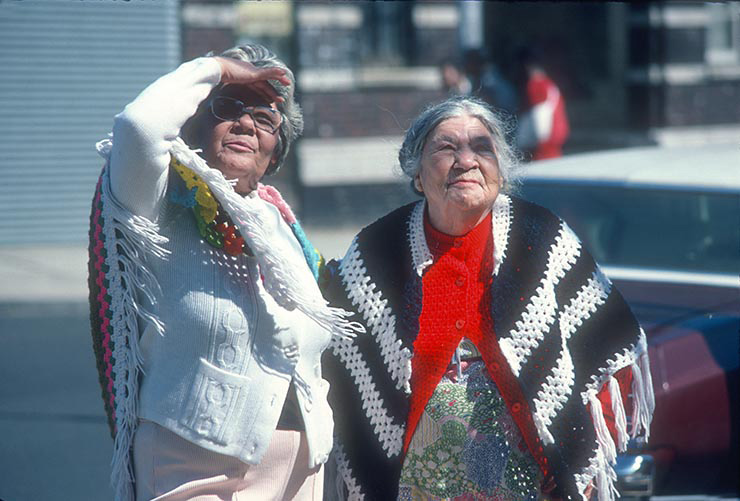
John Ahearn & Rigoberto Torres. “Banana Kelly Double Dutch” The Bronx, NYC. 1982. (photo © Martha Cooper)
BSA asked Mr. Ahearn a few questions and he provided some great insights into the production and life behind these Double Dutch girls.
BSA: Do you see girls and women playing Double Dutch much in the neighborhood this summer?
John Ahearn: Double Dutch has been a classic rope jumping style for a while, the double rope keeps things moving. It sometimes seems to be always be in fashion.
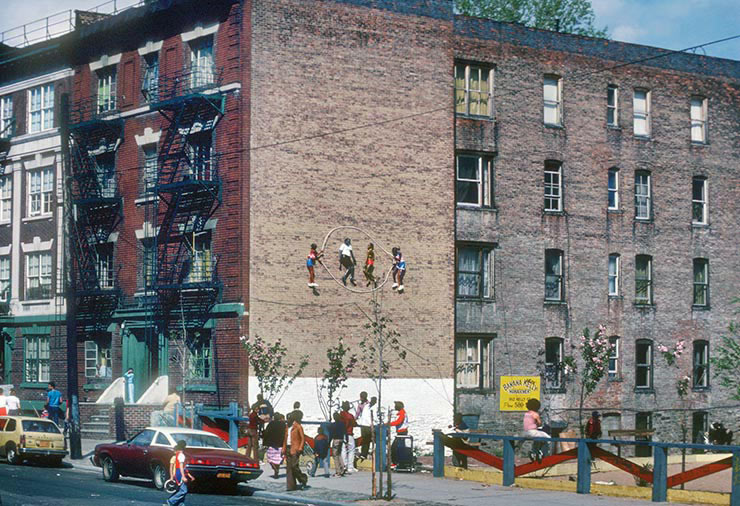
John Ahearn & Rigoberto Torres. “Banana Kelly Double Dutch” The Bronx, NYC. 1982. (photo © Martha Cooper)
BSA: Your personal relationships with people in the neighborhood have figured prominently in your subjects. How does time change your perception of the original works?
John Ahearn: All the sculptures are some kind of collaboration with the specific people and the neighborhood. Time tests the validity of the intention and the expression. Art can lose meaning and look silly, or it can increase in its purpose and gain poignancy.
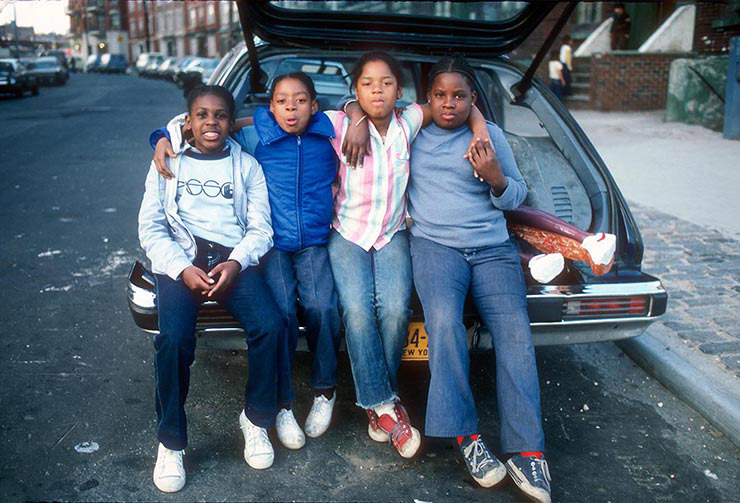
John Ahearn & Rigoberto Torres. The original stars of “Banana Kelly Double Dutch” The Bronx, NYC. 1982. (photo © Martha Cooper)
BSA: Your work captures so much action! Is that a particular goal for you?
John Ahearn: When I first saw Marty’s profound image of the real four girls in front of their sculpture, taken when it was first installed in 1982, I was shocked! I had emphasized the unique quality of each separate girl but Marty captured them as one piece, engaged in a solemn ritual of play, with all heads bowed to the center. I was moved to see her vision and it took me a few decades to look at the actual sculpture with full confidence.
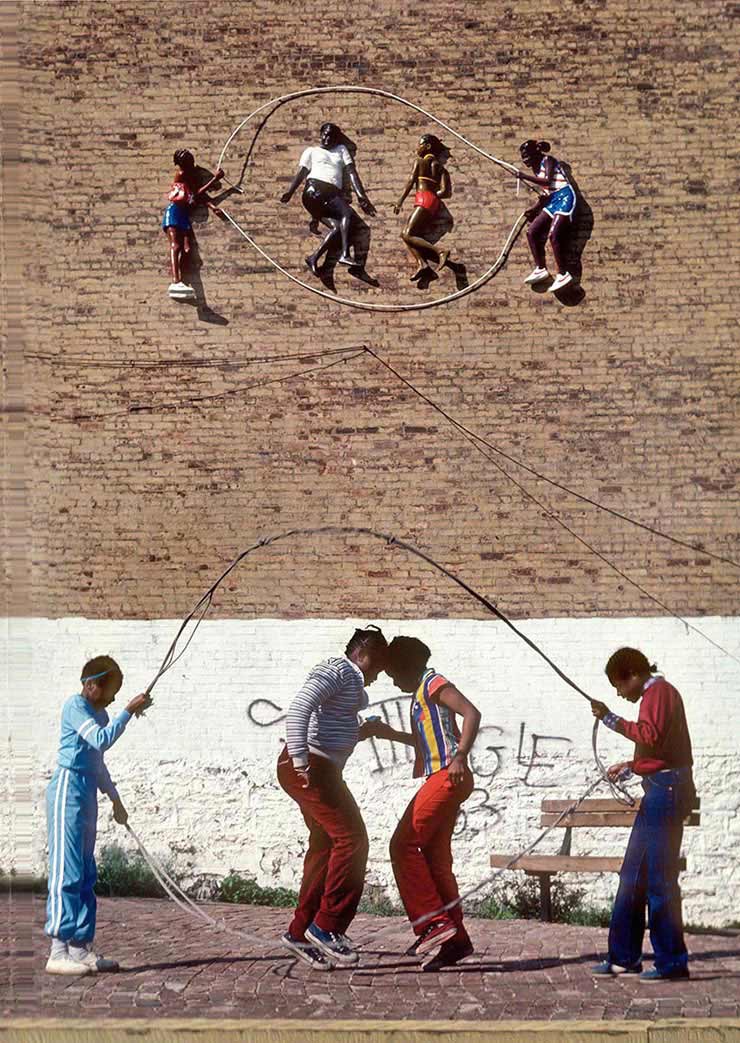
John Ahearn & Rigoberto Torres. The classic photo of “Banana Kelly Double Dutch” The Bronx, NYC. 1982. (photo © Martha Cooper)
BSA: Why is it important to you to make art accessible to the people on the street?
John Ahearn: I need to feel that my perception includes the point of view of others.
BSA: What inspired you to refurbish this installation and how did you find La Freeda, Jevette, Towana, and Staice?
John Ahearn: I believe the girls are La Freeda Mincey (whose mother still lives in the building and came out to watch us reinstall the girls) Javette Potts, whose mother created the original girl’s dance group) Tawana Brown, and Staice Seabrine (with whom we are more regularly in touch)
In 1981, we were considering our first neighborhood commission at Fox St. and Intervale Ave. We took a composite 180 degree photo of the area. On all sides were burned out buildings, but one wall popped out in perfect condition with a surrounding block that was completely together. That was “Banana Kelly”, a community group committed to survival and improving the area, with the Potts family at the center of things.
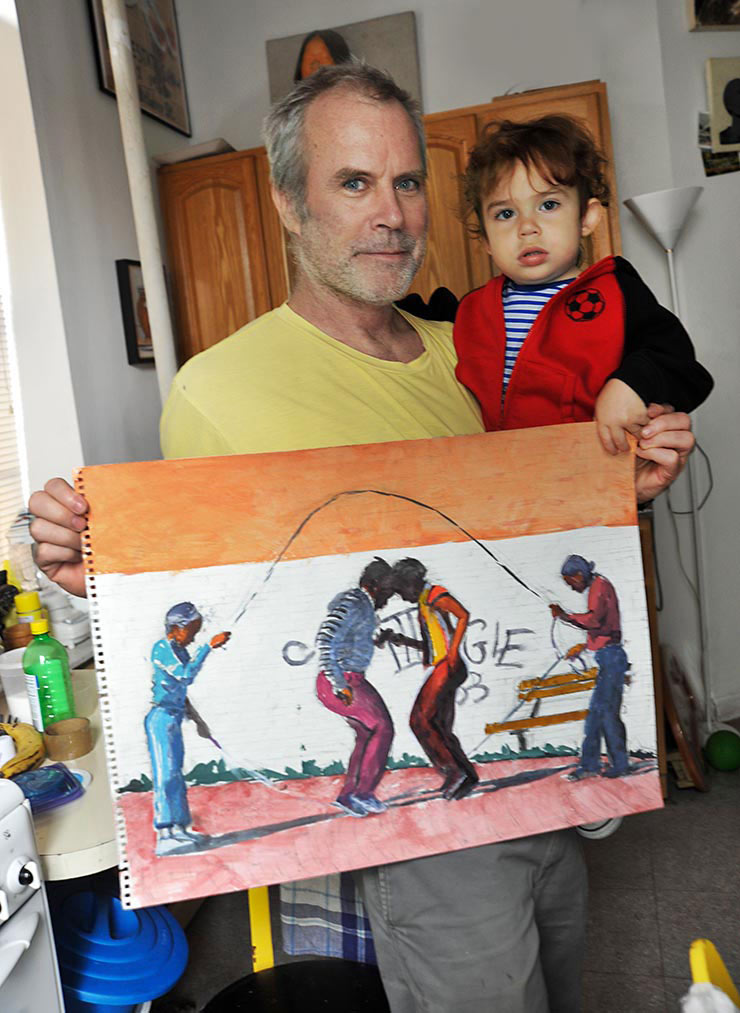
John Ahearn’s drawing of Martha’s photo. 2011. (photo © Martha Cooper)
Later there was a block party at Kelly St. that featured an “African Dance” group of girls, including Javette Potts, the granddaughter of Mr. Potts. It was at that time that we had a notion to have the four girls play Double Dutch for the image.
This is actually the second time we have repaired the sculptures. By 1986, the ravages tearing up the Bronx had reached the little park that Banana Kelly had built on the corner. All the bricks were torn up, and some kids were heaving them at the Double Dutch sculptures. Parts of the figures were breaking.

John Ahearn & Rigoberto Torres. “Banana Kelly Double Dutch” The Bronx, NYC. 1986. (photo © Martha Cooper)
At the same time, Rigoberto’s Uncle Raul’s Statuary Factory had burned down and all our molds related to the three murals had been stored there and were lost. So we removed the Double Dutch sculptures from the wall, and took them to our studio to restore them. We reinstalled them higher than before with a slightly different design.
Meanwhile, the devastated block which Banana Kelly faces (south) was transformed into a huge park. All the buildings had been torn down heading north to Longwood Avenue. The design of the 2nd version of the sculptures (see Marty’s photo) looks very nice to me now, but it had always annoyed me.
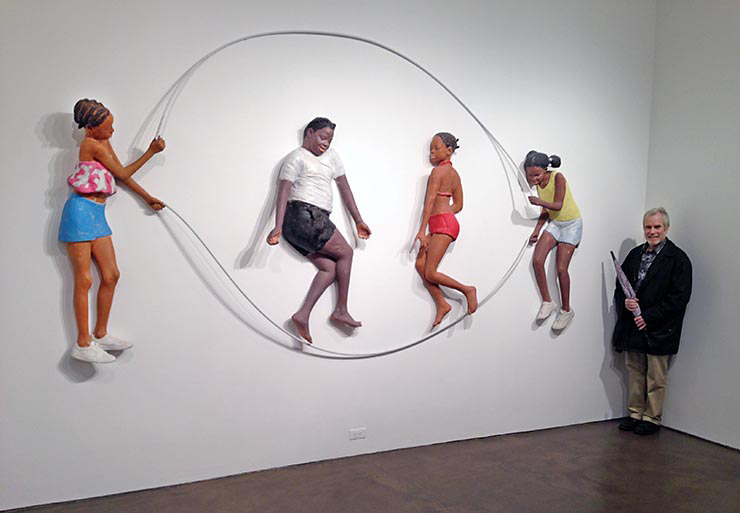
John Ahearn & Rigoberto Torres. A gallery version of “Banana Kelly Double Dutch” at Alexander & Bonin Gallery in Manhattan. NYC 2014. (photo © Martha Cooper)
The tiny “park” site at Kelly St. eventually was fenced off and abandoned, awaiting future use. Sometimes old sculptures in their neighborhood locations can be very satisfying and true. But it always seemed that the Double Dutch should be returned to their original design.
Recently the lot was sold to the new Catholic Nursing facility next door, to be rebuilt as their parking area. We wanted very much to keep the sculptures on the same wall and this seemed like the right moment.
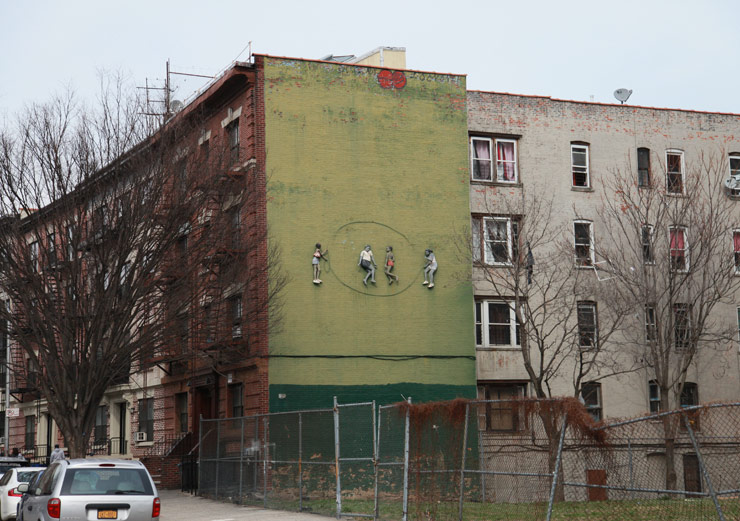
John Ahearn & Rigoberto Torres. “Banana Kelly Double Dutch” The Bronx, NYC. 2014. (photo © Jaime Rojo)

John Ahearn & Rigoberto Torres. “Banana Kelly Double Dutch” The Bronx, NYC. 2014. (photo © Jaime Rojo)
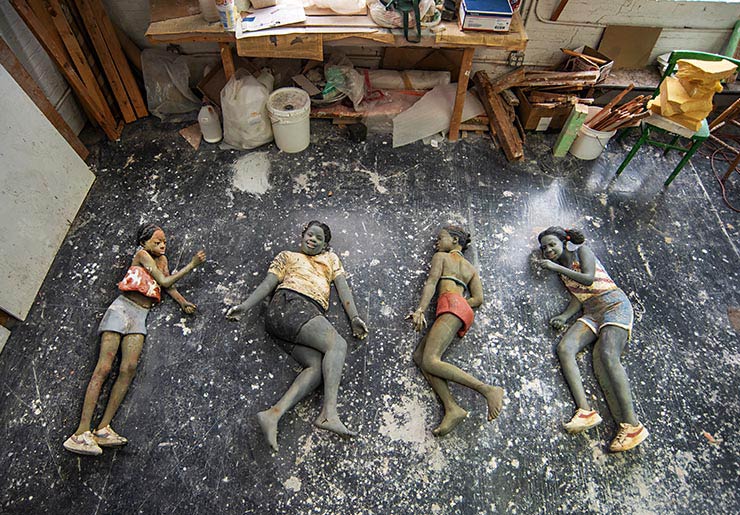
John Ahearn & Rigoberto Torres. La Freeda, Javette, Towana and Staice back at the studio waiting to be restored. NYC 2018. (photo © Martha Cooper)
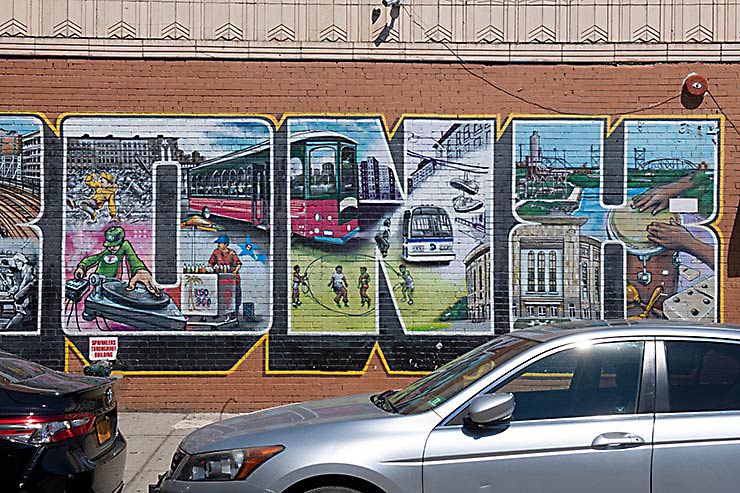
TATS CRU homage to John Ahearn & Rigoberto Torres. Detail. “Banana Kelly Double Dutch” The Bronx, NYC. 2018. (photo © Martha Cooper)
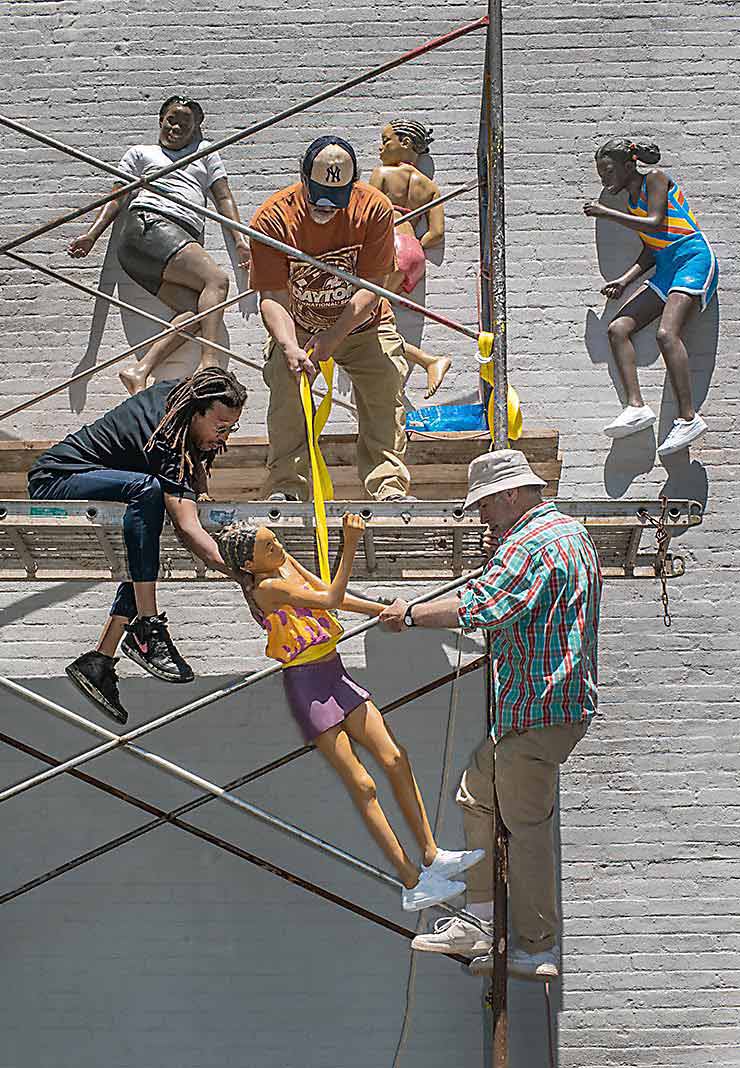
John Ahearn & Rigoberto Torres. “Banana Kelly Double Dutch” The Bronx, NYC. 2018. (photo © Martha Cooper)
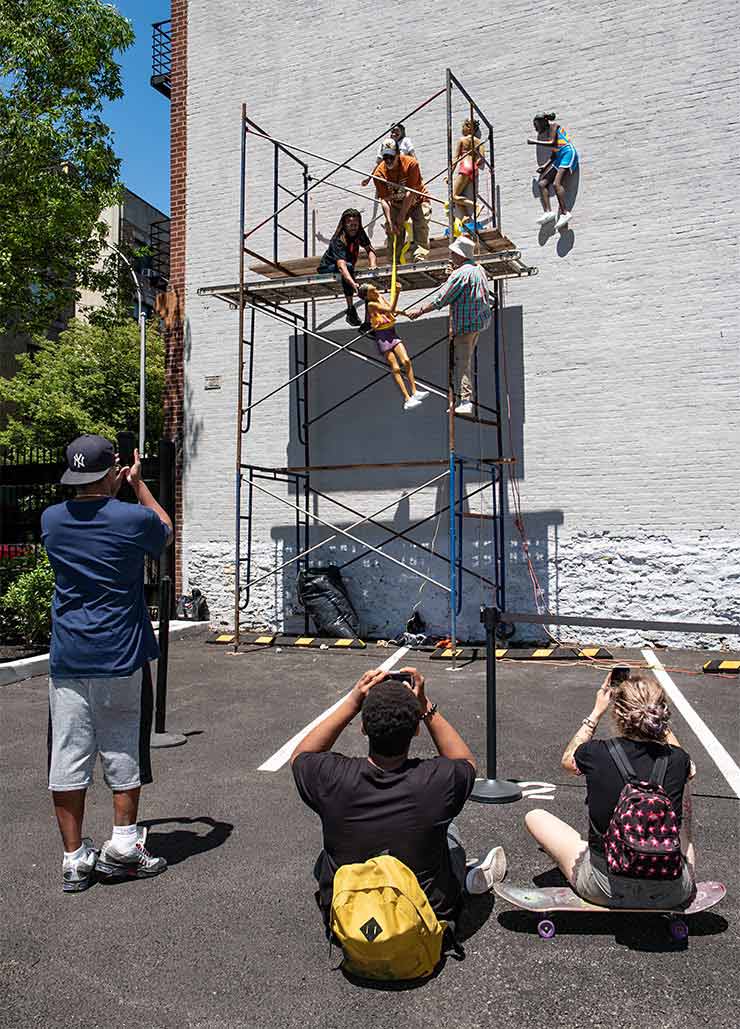
John Ahearn & Rigoberto Torres. “Banana Kelly Double Dutch” The Bronx, NYC. 2018. (photo © Martha Cooper)
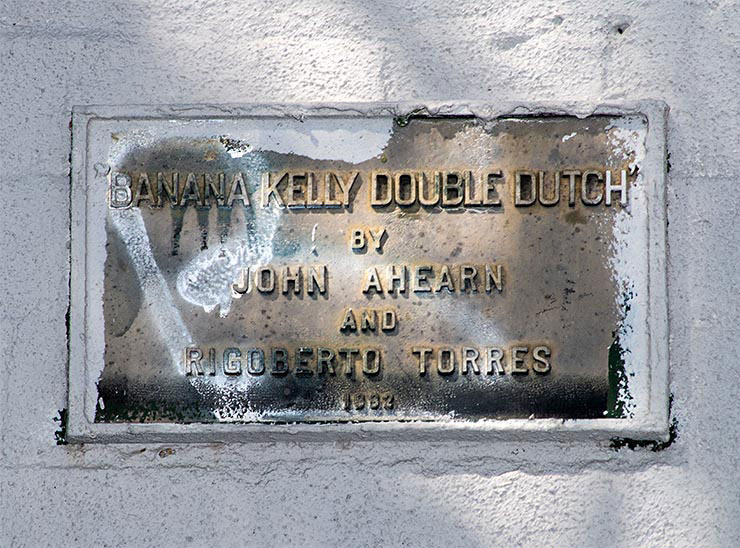
John Ahearn & Rigoberto Torres. “Banana Kelly Double Dutch” The Bronx, NYC. 2018. (photo © Martha Cooper)

John Ahearn & Rigoberto Torres. “Banana Kelly Double Dutch” The Bronx, NYC. 2018. (photo © Martha Cooper)
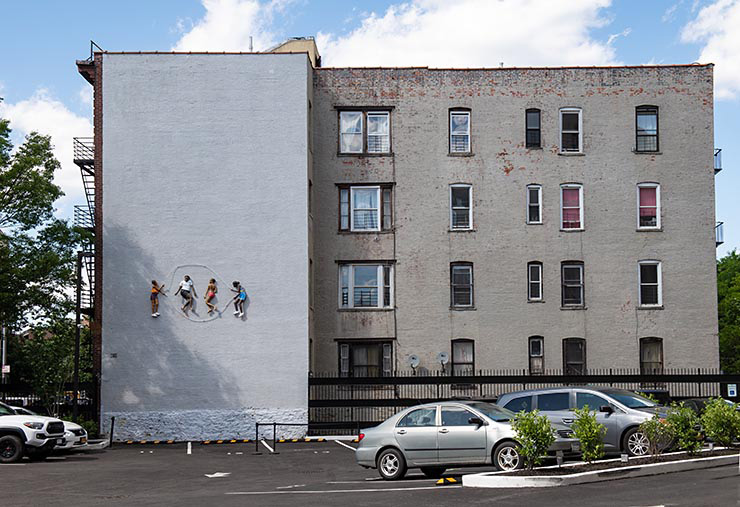
John Ahearn & Rigoberto Torres. “Banana Kelly Double Dutch” The Bronx, NYC. 2018. (photo © Martha Cooper)
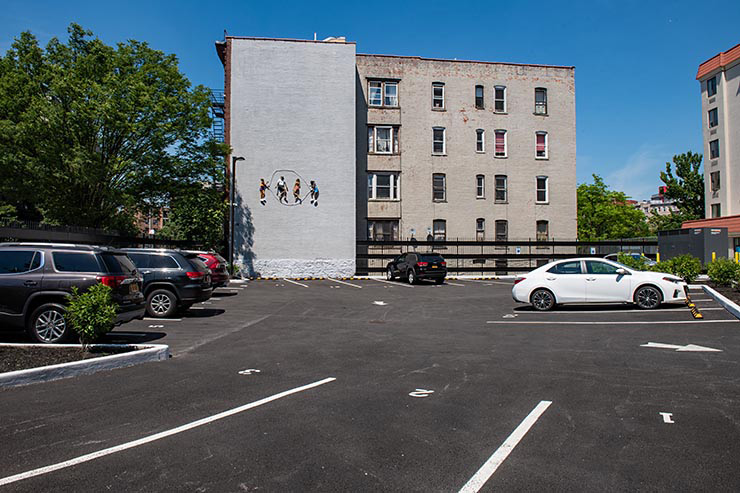
John Ahearn & Rigoberto Torres. “Banana Kelly Double Dutch” The Bronx, NYC. 2018. (photo © Martha Cooper)
Frankie Smith
“Double Dutch Bus” 1981
” ‘Double Dutch’ is a tribute to all the girls in the world, especially the girls on my block. I’ve been watching them for 25 years. They use their mothers’ clotheslines to play the game – it’s an art. It’s a tribute to them – they’re really good at it.” – Frankie Smith to Dick Clark on American Bandstand.
Malcom McLaren
“Double Dutch” 1983
Take to the ropes and turn them slow
They skip and jump through the hoop
About the gals from New York City
Start again
Other Articles You May Like from BSA:
Our weekly focus on the moving image and art in the streets. And other oddities. Now screening: 1. "We Still Fight" by South Italy Street Art2. "No Pain No Gain" Graffiti & Tattoo with Br...
Lucca Ledda’s chubby men are constantly being tormented and abused by someone. If it’s not a full-bosomed dominatrix holding his leash then he is being pulled by his long rabbit ears from a hat, sand...
A lot of Street Art went up this week and a lot of serious crap went down on the national stage. We're seeing politically themed Street Art appearing up all over the city right now, and some of it ...
Our weekly focus on the moving image and art in the streets. And other oddities. Now screening : 1. “Rise and Fall" for Clorofilla with Andreco 2. Hitnes. The Image Hunter / Voodoo Duck...
475 Kent for Sale! Actually, it already sold to real estate developers a year ago - Roughly 20 years after an active artist community brought this nearly abandoned old pasta factory to l...
 BROOKLYN STREET ART LOVES YOU MORE EVERY DAY
BROOKLYN STREET ART LOVES YOU MORE EVERY DAY










